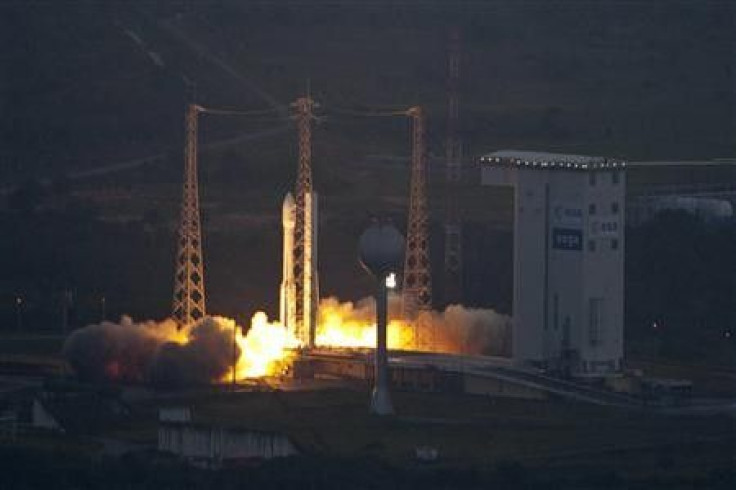Europe's First Vega Rocket Blasts off Successfully

(Reuters) - Europe's first Vega rocket blasted off from French Guiana Monday in a successful inaugural flight aimed at giving Europe a vehicle for scientific satellite missions.
The rocket took off from the European Space Agency's (ESA) launch site in Kourou, French Guiana, on the northeast coast of South America at 7.00 a.m. (1000 GMT), with nine scientific satellites on board.
Its main passenger, the LARES satellite that will test aspects of Einstein's theory of general relativity, separated from the rocket 55 minutes later.
Vega will complement the family of rockets currently available for launch from Guiana - the Ariane 5 heavy-lift launcher introduced in 1996, and Soyuz, a medium-class launcher.
"A new member of the (European) launcher family has been born," ESA director general Jean-Jacques Dordain said after the 90 minute flight.
"Today is the first day of a new operational life which we hope will be a long and successful one. Vega is a launcher that is necessary for ESA," Dordain said.
Vega's maiden launch follows years of delays and budget disputes since it was proposed in the mid-1990s. The ESA decided to back the rocket in 2003.
They argued that a rocket for small satellites fulfilled a niche market and rockets for those satellites would be scarce.
Most rockets from the former Soviet Union are based on stages of ballistic missiles that are no longer in production.
American competitors in this segment have encountered problems. SpaceX - brainchild of PayPal founder Elon Musk - has pulled resources from its Falcon 1e rocket and only one launch in 2015 is now scheduled. Taurus XL, launched by Virginia-based Orbital Sciences Corp, has suffered two failures since 2009.
ITALIAN FINANCING
In a break from previous European rocket programs that were heavily financed by France, Vega's development price tag of more than 1 billion euros, including inaugural flights, has been 60 percent financed by Italy.
Rome-based ELV SpA, a joint venture company between Italian rocket-propulsion manufacturer Avio and the Italian space agency ASI, is Vega's prime contractor.
In Guiana, Vega's launchpad is on the site of the Ariane 1 rocket put into service in 1979. Using an already cut and concreted area of jungle saved between 50 and 100 million euros.
Vega stands 30 meters (98 feet) tall and consists of three solid propellant stages and a Ukrainian-built restartable liquid propellant upper stage.
The ESA is expected to ask member states for permission to upgrade Vega and replace the liquid stage with a new version built in Germany.
Monday's flight qualified Vega, and future Vega flights and contracts will be handled by the Arianespace commercial launch consortium.
Arianespace chief executive Jean-Yves Le Gall said: "We are off to a good start as we've already signed two commercial launch contracts to launch (satellites) aboard Vega."
© Copyright Thomson Reuters 2024. All rights reserved.











